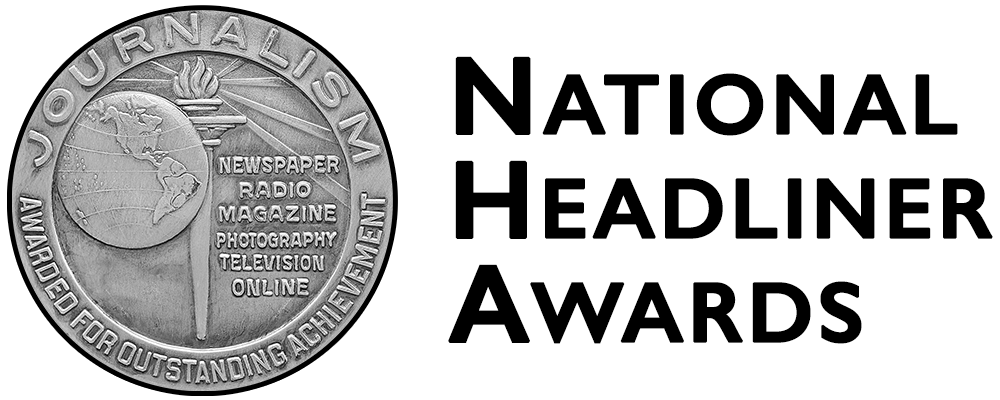
Next-Gen TV Benefits Well Worth The Cost
The future of free TV will not be free.
To be part of the next-generation of broadcasting, broadcaster will have to adopt and implement the next-generation standard, ATSC 3.0. And that will involve some expense.
How great an expense?
A study by the consulting firm Meintel, Sgrignoli & Wallace commissioned by the Pearl consortium of major station groups says it will be between $300,000 and $600,000 per station. That would, the study says, cover a new exciter and mask filter, studio-to-transmitter link modifications, test equipment, audio and video encoders, schedulers and the installation of it all.
To take full advantage of ATSC 3.0 — that is, to insure that signals reach mobile devices and the those old sets in the basement and to allow zoned advertising — it will also be necessary for broadcasters to establish secondary stations in their markets to relay signals.
These single frequency networks (SFNs) — so-called because the stations would all operate on the same channel — could cost a few million dollars per market, according to one cost analysis.
Broadcasters would also have to foot the bill in each market of operating a transition station. Such stations would continue to simulcast in SD all the stations using the current digital standard for the sake of those now watching off air and not eager to rush out and buy new sets with ATSC 3.0 tuners. ATSC 3.0, in case you don’t know, is not backwards compatible.
In most markets, setting up the transition stations would not be particularly dear. But in large markets like New York and Los Angeles where spectrum is at a premium, securing or setting aside a channel for the transition could be pricey.
I have yet to see any cost estimates on the transition stations.
Despite that unknown and potentially substantial variable, ATSC 3.0 does not strike me as prohibitively expensive, except, perhaps, in the smallest TV markets where they may still be waiting to upgrade to HD in the newsroom.
And there are ways to mitigate the expense. After the incentive auction, the government is going to reimburse broadcasters up to $1.75 billion to cover the costs of moving to new channels in the repacking of the TV band. If ATSC 3.0 proponents can persuade the FCC to sync up the rollout of ATSC 3.0 with the repacking, the reimbursement money may help defray the cost of ATSC 3.0.
Broadcasters can also cut the cost of the SFNs. Broadcasters in a market could get together to share the cost and the facilities. Individually or collectively, they could also avoid the big capital outlay by leasing the facilities from a third party. Keep in mind, too, that SFNs are optional.
On a macro level, ATSC 3.0 appears to be well within financial bounds. Let’s be conservative and say that 1,000 post-auction stations pay an average of $500,000 each to gear up for ATSC 3.0. That’s $500 million. And then let’s say, broadcasters spend an average of $3 million in each of the top 100 markets for single frequency networks. That’s another $300 million.
Excluding the cost of the transition stations, ATSC 3.0 implementation amounts to an investment of $800 million for an industry that takes in more than $20 billion a year. Call ATSC 3.0 the 4% solution.
So why do I hear muttering from some about the expense of ATSC 3.0, about how they can’t make the ROI work.
I get this coming from small-market stations that are not part of a big group. For them even $300,000, the lower end of the cost estimates, is daunting.
But I’ve also heard kvetching about cost from the network O&O groups, the most lucrative in the business. Each has spot revenue in excess of $1 billion.
I suspect that CBS is going to dump as many of its duopoly stations and standalone CW affiliates in the incentive auction as it can. That means it could be left with as few as 16 stations. Upgrading them would cost just $8 million before repack reimbursement offsets. Note that the CBS station group enjoyed spot revenue of $1.6 billion in 2014, according to BIA/Kelsey.
Frankly, the networks objections to ATSC 3.0 go much deeper than the implementation cost. More programmers than broadcasters, they don’t like the idea of giving away TV for free anymore. But whining about cost is an easy way for them to dismiss the whole thing.
I’ve been a champion of ATSC 3.0 for years now so I won’t go into a long discussion of why broadcasters — at least those who intend to stay in the business for a while — have to embrace it. But I will give you the top bullet points.
With ATSC 3.0, broadcasters will be able to:
- Broadcast 4K and other advanced TV formats
- Broadcast to fixed sets with set-top antennas in most places
- Broadcast directly to smartphones and tablets
- Provide zoned programming and advertising within markets
- Provide datacasting services to third parties
- Lease excess capacity to other service providers
No, free TV of the future will not be free, but it’s a bargain that will pay dividends for generations to come.
Harry A. Jessell is editor of TVNewsCheck. He can be contacted at 973-701-1067 or [email protected]. You can read earlier columns here.


























Comments (6)
Tony Alexander says:
May 23, 2015 at 4:05 pm
There are many strange comments and writings about ATSC 3.0 and your contribution is equally strange to me. You seem to be pleading with stations to buy into ATSC 3.0. I thought broadcasting was a business and businesses tend to invest in new technologies if they can clearly see a return on their investment. You don’t mention anything about a return on investment. You do mention costs and you do mention a few benefits of ATSC 3.0, but you fail to even hint at how these benefits might produce new revenue or new business opportunities. I suspect that you did not tie these benefits to new revenue because you don’t see any specific new revenue opportunities in these benefits. The benefits that you mention are: (a) broadcast 4K and other advanced TV formats. Would there be new revenue associated with this change? I can’t think of any. (b) broadcast to fixed sets with set-top antennas in most places. Wow! This is not exactly revolutionary and something that I thought broadcast TV has done since the 1940’s and again I don’t see any new revenue streams here. (c) broadcast directly to smartphones and tablets. Some of this has been attempted by existing broadcasters without great success, but maybe there is some new revenue here. This won’t be immediate since I’m guessing that smartphones and tablets would need to be fitted with an attachment or new devices with receivers in them. (d) provide zoned programming and advertising within markets. Might be new revenue here. How much? Would this be of great value in smaller markets? (e) provide datacasting services to third parties. Not exactly a new idea and has been done on a limited basis without great rewards. (f) lease excess capacity to other service providers. In a world where bandwidth is a commodity, this does not exactly seem to be a big opportunity. Leasing capacity, I submit, is very difficult to do in medium and small markets.
I saw where Gordon Smith said that the FCC should support ATSC 3.0. Is there a rulemaking at the FCC to implement ATSC 3.0? Has NAB filed a petition at the FCC in support of a specific ATSC 3.0 standard?
The FCC is only going to act if the industry clearly states that it wants this standard to be adopted and implemented and I’m guessing that there needs to be a clear pathway of how this new standard will serve the public and how the conversion will take place.
Your column seems to be more of an evangelistic plea than based upon new business opportunities.
Linda Stewart says:
May 24, 2015 at 7:03 pm
The point I was trying to make is 3.0 is low risk, high potential reward investment. To your last point, proponents are preparing to petition the FCC to adopt 3.0 as the national standard. That petition, which may come this summer, will clearly state how the new standard is in the public interest and how it can be implemented.
Ellen Samrock says:
May 25, 2015 at 12:33 pm
Despite the naysaying, a lot of indie station owners see the potential of ATSC 3.0 and want to move to it ASAP. This is particularly true of LPTV. At the LPTV Workshop, Bill Lake stated that the FCC definitely wants to see a migration plan of 3.0 for both broadcasters and consumers, as Harry indicated.
Wagner Pereira says:
May 25, 2015 at 10:26 pm
@BroadbandisBest (except when it’s not): One only had to watch the Tornadoes, Flooding and Deaths in Texas/Oklahoma area this weekend as cars and even Houses were sweep away. At the News Conferences local officials stated that 1) Telephone (copper) was out 2) Electricity was out 3) Cell Service was out and 4) Cell Data was out. As thus, citizens were having a very hard time getting vital lifesaving info. It is not hard to Imagine the role ATSC 3.0 would have made on tablets and smartphones (dumbphones in this situation) that were nothing more than bricks at this point. You ask about Broadcasting in the Public Interest? Simply review those Press Conferences.
Ellen Samrock says:
May 24, 2015 at 2:31 am
When Mark Aiken and his team first began testing ATSC 3.0 they merely swapped exciters while keeping the existing MPEG 2 stream. The improvement was dramatic. At the time (3/13), Mr. Aiken indicated that 3.0 would retain compatibility with MPEG2 while fully supporting newer, more efficient codecs. Many encoders in use today (such as ones our station uses) already support H.264 in addition to MPEG2. So it’s possible for a station to begin broadcasting ATSC 3.0 with H.264 for just the cost of a 10-20K exciter. It need not be as expensive as reported in Harry’s article. But just having the ability to broadcast to handheld devices makes upgrading to 3.0 a no brainer with immediate ROI as we would now be able to sell to advertisers across several platforms.
Ellen Samrock says:
May 24, 2015 at 1:10 pm
I should also mention that at the time of these tests, Mark Aitken and his crew used the existing PA and filter. Mark did indicate that using OFDM resulted in a slight loss in coverage, about a ~1 dB differential. But in terms of service compared to 8VSB, OFDM won hands down.